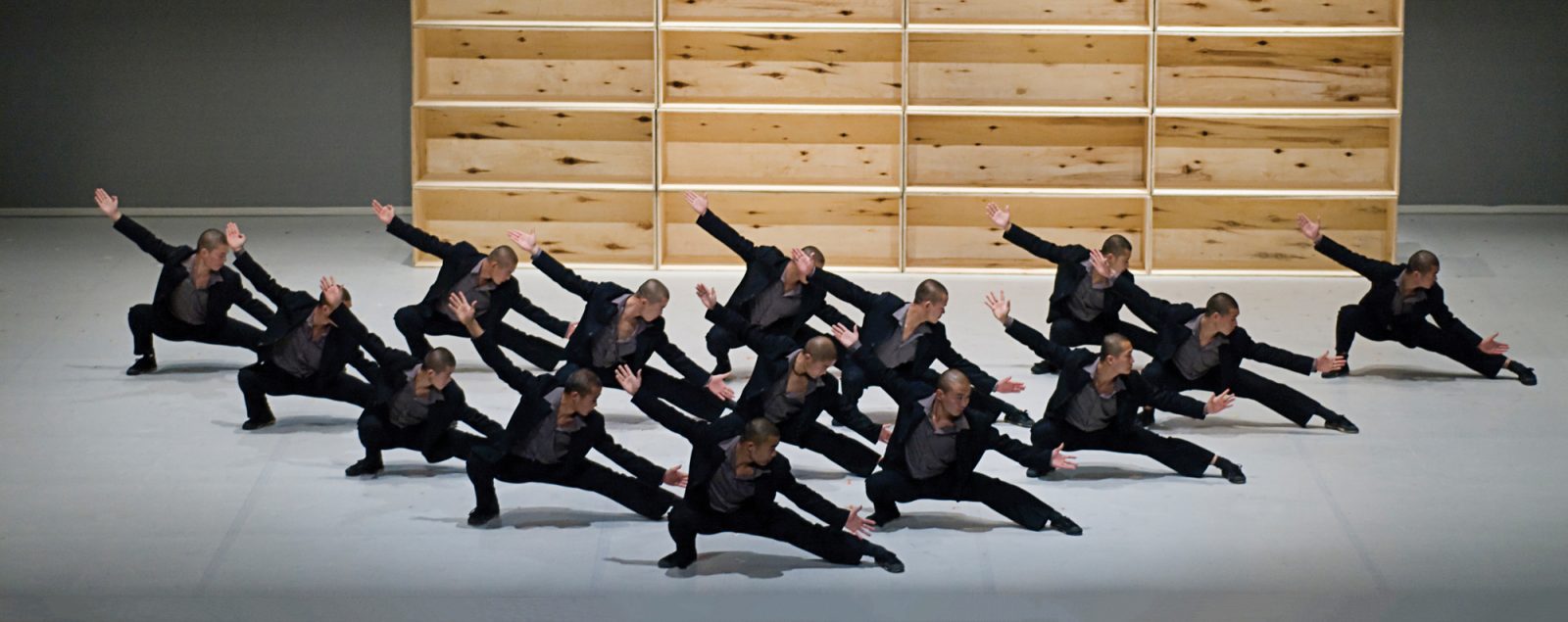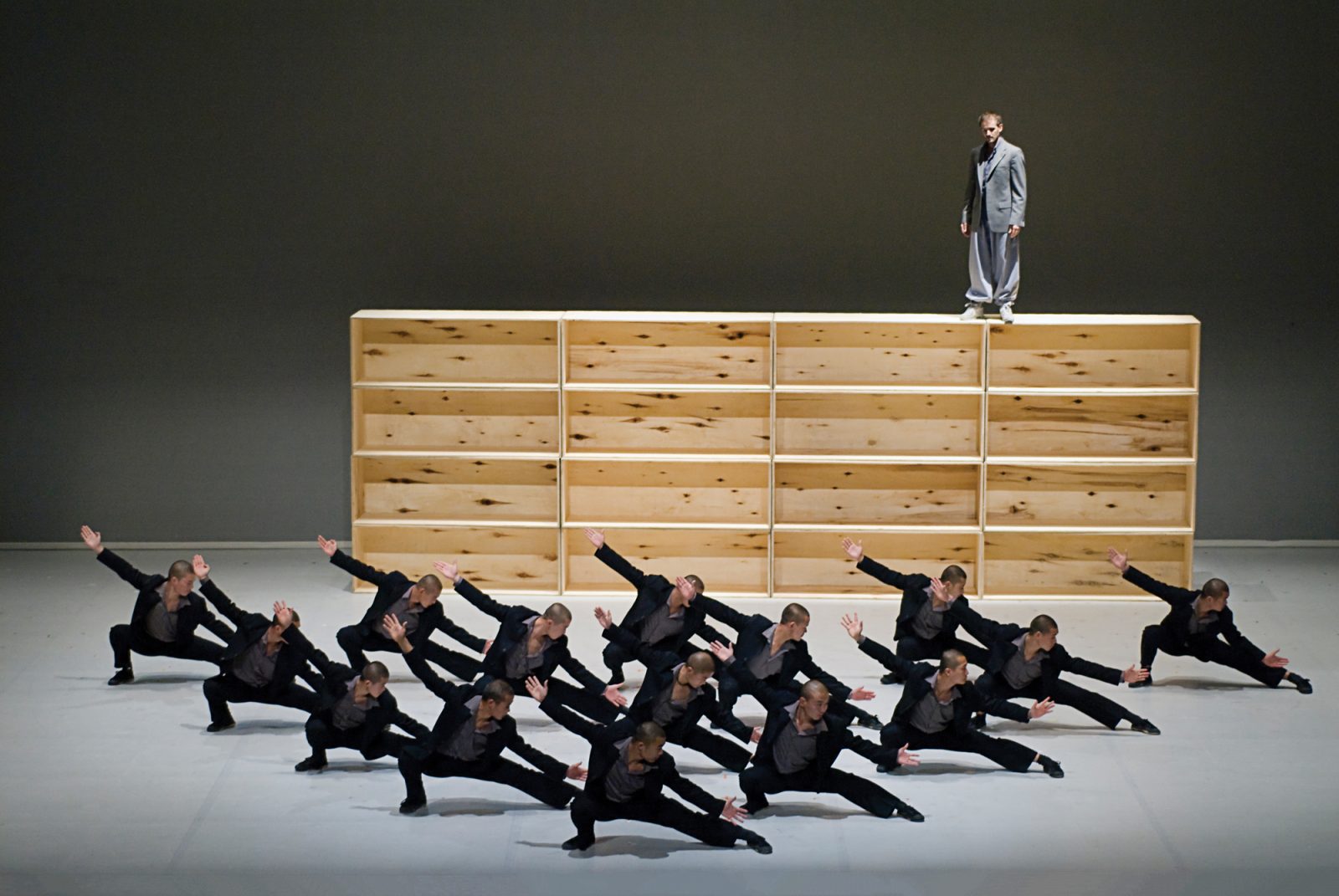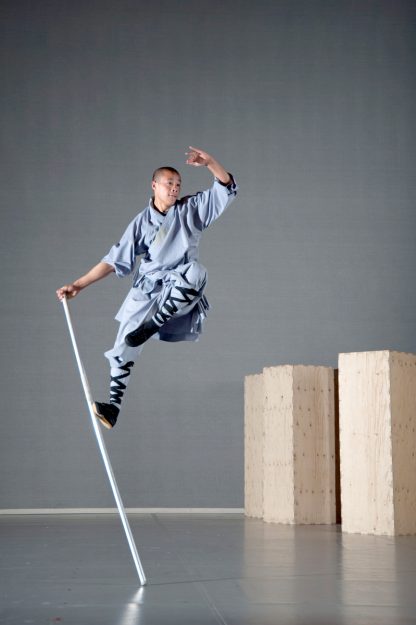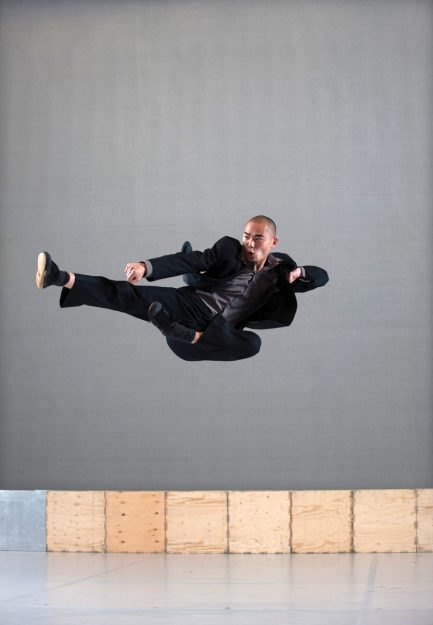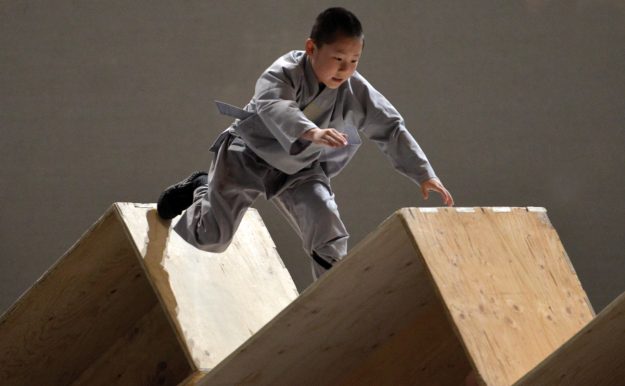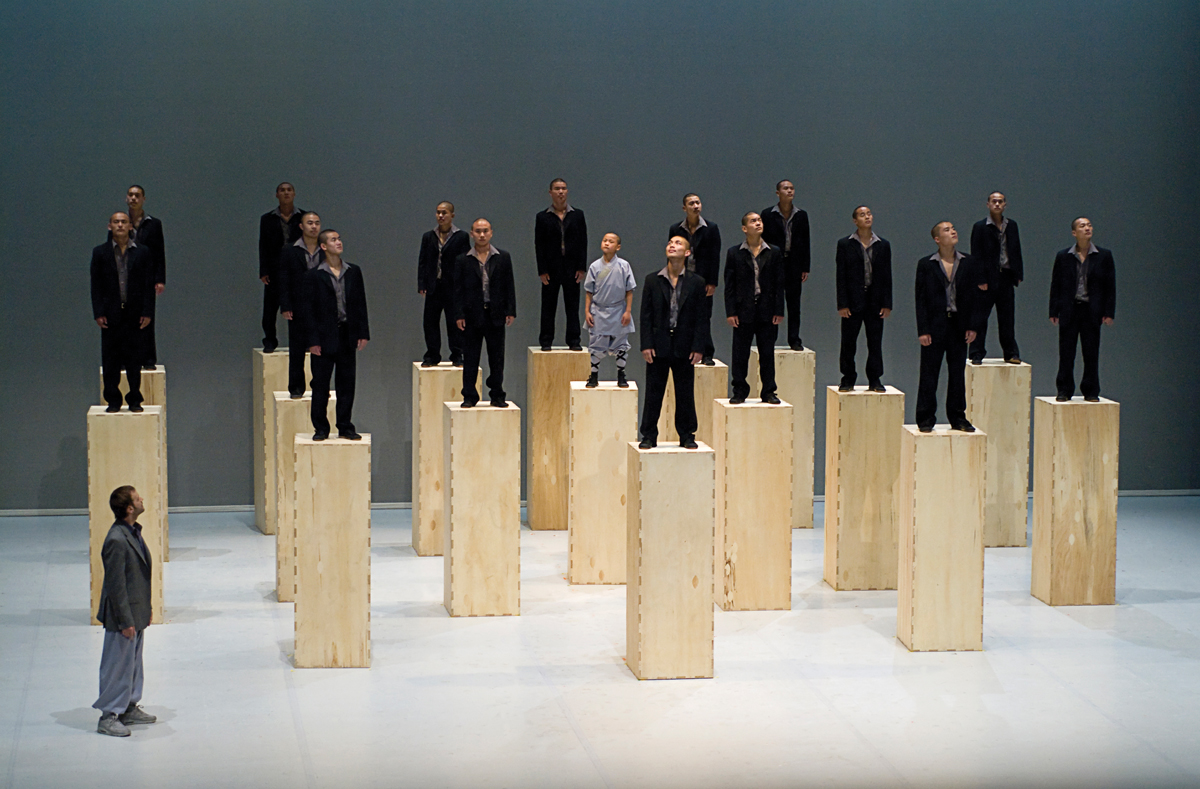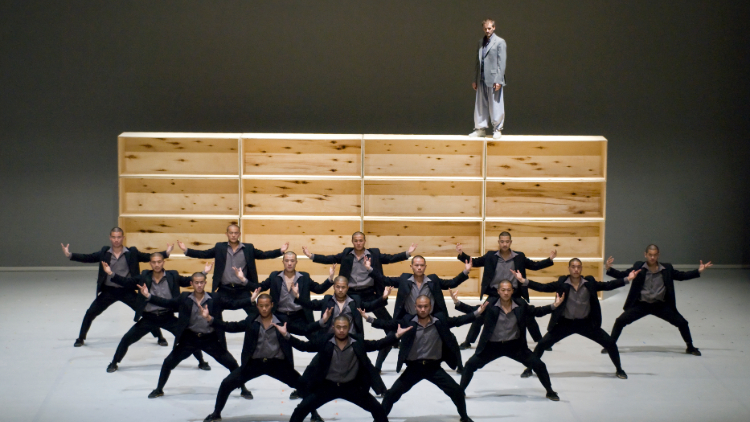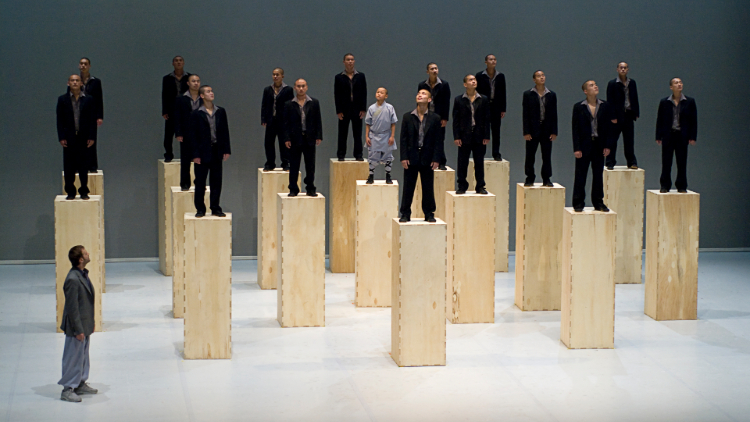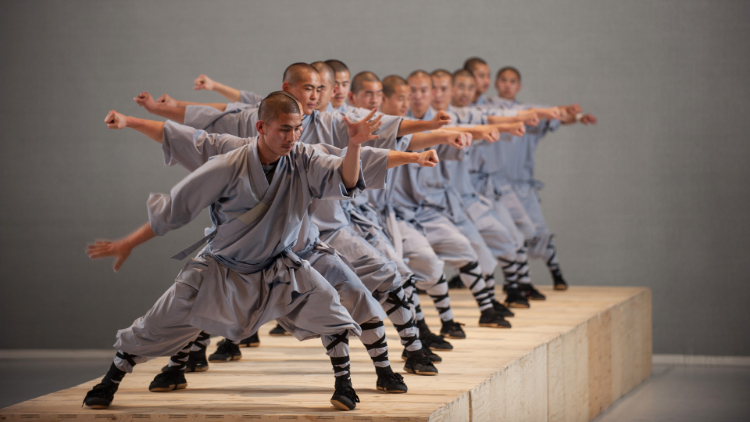Dance the body music
Silvia Radan
31 March 2012

It took 800 years and 30 generations of monks for the Shaolin Temple to receive and accept a dancing proposal.
It all started in 2007, when one of the world’s most daring choreographers, Sidi Larbi Cherkaoui, left the comforts of his Flemish home and travelled to the Shaolin Temple in China to fulfil a childhood dream: encountering the extraordinary people who have the ability and power to make the body and the mind work as one. And this is how Sutra was born.
Something on the lines of a surreal poem or a Cubist painting, Sutra is a dance that challenges the very concept of dancing, using a lot of martial arts, abstract movement and physical effort. From its premiere in London in 2008 to its world tour shows, Sutra enchanted audiences and critics alike. Its last performance was here, at the Emirates Palace last week, part of the ongoing Abu Dhabi Festival (ADF).
Choreographed by Cherkaoui for the renown Sadler’s Wells dance company of London, it is performed by 17 Shaolin monks on Szymon Brzoska’s beautiful East meets West contemporary music, using Antony Gormley’s clever stage design — 21 wooden boxes moved about as in a jigsaw puzzle to represent anything from a coffin to a city.
Cherkaoui himself is in the performance, as the only non-Shaolin Temple dancer, representing the “outsider”, the parallel world, the spectator.
“Sutra is a reflection on the temple and meeting the temple. My character on stage represents the audience going inside of the performance, finding also the relation between the community and the individual and how they influence each other,” explained Cherkaoui.
“There are a lot of poetic images created by the boxes, with which we make different universes, different sets where the story unfolds, which is in between abstract and concrete. It speaks about tradition and about the future, how in the present we are in a constant struggle about keeping our tradition and thinking about where it’s gonna go”.
Born in Belgium in 1976 to a Flemish mother and a Moroccan father, Sidi Larbi Cherkaoui began dancing professionally at 16 years old. He worked with a contemporary dance company, but in parallel he also joined hip-hop and modern jazz dance groups. Later he joined Les Ballets C de la B company, where he debuted as a choreographer in 1999 with Anonymous Society, for which he received three international awards. From here on his career just kept on growing, along with his creativity and ingenuity as a choreographer.
In 2007 he felt the need to get away from Europe and renew his sources of inspiration. Thus, he arrived at the Shaolin Temple, built in the 5th century on the peak of Mount Song, one of the Sacred Mountains of China. For centuries, the temple has been equally famous for Chinese martial arts, in particular Kung Fu and Thai Chi, and the teachings of Zen Buddhism.
Having the privilege to spend time and learn from the Shaolin monks, Cherkaoui wanted to repay them in a more meaningful way than cash.
“From the beginning they were very opened to the idea, being fascinated by the concept of choreography,” said Cherkaoui.
“Let’s not forget that they are very used to present formal martial arts in the form of demonstrations. In many ways, they also have to choreograph, so they are used to having movements set in a certain way. When I went there and saw them train I saw choreography.”
Nonetheless, the Shaolin “dancers”, who were selected among the warrior monks of the temple, were intrigued by the western concept of choreography. Occasionally, a dance move shown to them by Cherkaoui would remind them of their martial arts. Perhaps that is why Cherkaoui no longer makes a difference between choreographing Kung Fu and western dance.
“It’s about the body,” he stressed.
“I’m working with martial arts and I’m choreographing martial arts, but the moment an arm goes up, who says it’s martial arts or it’s dance? It depends on your own references, but if you have no references – and that is kind of what I’m hoping the audience will open up to – is to stop having references and just experience the motion. I think in this time we live in we should learn see things again with less prejudice and references are a form of prejudice.”
Working with the monks was a “great” experience for Cherkaoui. “We laughed a lot,” he said. From the moment he arrived, Cherkaoui was quite surprised by life at the temple. The monks we allowed to use mobile phones and listen to pop music. On the other hand, in deep freezing temperatures they didn’t feel the need to use heating radiators. While the monks were learning about various dance styles and moves from Cherkaoui and several other western dancers that he brought with him, the choreographer too learnt about martial arts moves, some of them so beautiful and graceful up in the air, but with the power to kill.
A great help for him at the temple was Shi Yan Zhuang, the temple leader of the warrior monks.
“I love street dance,” admitted Shi Yan.
“The choreographer brought some of his friends dancers from a hip-hop company to the temple and we loved watching them dance.”
Fun aside, for him, as for the other monks, there is no difference between Kung Fu, Tai-chi — which the Shaolin created — and dance, other than styles.
“They are all like a doctor. Doctor can heal people; doctor can cure people; doctor can make you look more beautiful. These are all different treatments, but it is all done by the doctor. No matter what it is, Kung Fu, Tai-chi or dance, it is just a way of showing people a message,” explained Shi Yan.
A universal message is indeed what Cherkaoui created with Sutra.
In Buddhism, the term sutra (Sanskrit for “thread”) refers mostly to the sermons recited by Buddha, teachings that praised the harmony and acceptance of life and of all leaving creatures. Using the specially composed music of Szymon Brzoska, which, unusual for a dance performance, was played live on stage, without distracting from the dance, though, and the one-side opened body-size wooden boxes designed by Turner Prize winning artist Antony Gormley, Cherkaoui translated the Shaolin Zen philosophy into dance.
Here was a monk embodying a frog or a scorpion through very difficult, yet graceful, martial arts moves. In another sequence, the monks, now dressed in black suites, built a city out of their boxes and were acting like busy businessmen, only to crumble down, along with their “tower blocks”, which could not last an eternity. Dragged, kicked, stacked, the boxes, created different stories or different symbols, from a bookshelf to a graveyard and even a lotus flower and the thread between these stories was a 12-year-old monk, who kept suggesting what is there to come.






 Reply With Quote
Reply With Quote













